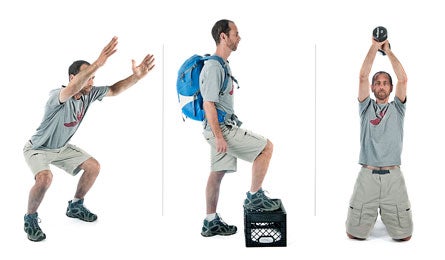Published January 6, 2012 01:25AM
Backpacking Fitness
Boost performance and be a better backpacker with these fitness- and strength-building moves from our experts.

Build Back Strength – Three moves to build pack-hefting core and back muscles for better on-trail comfort and injury prevention.
Kneeling Halfmoon – Loaded Step Ups – Lower Back Complex
